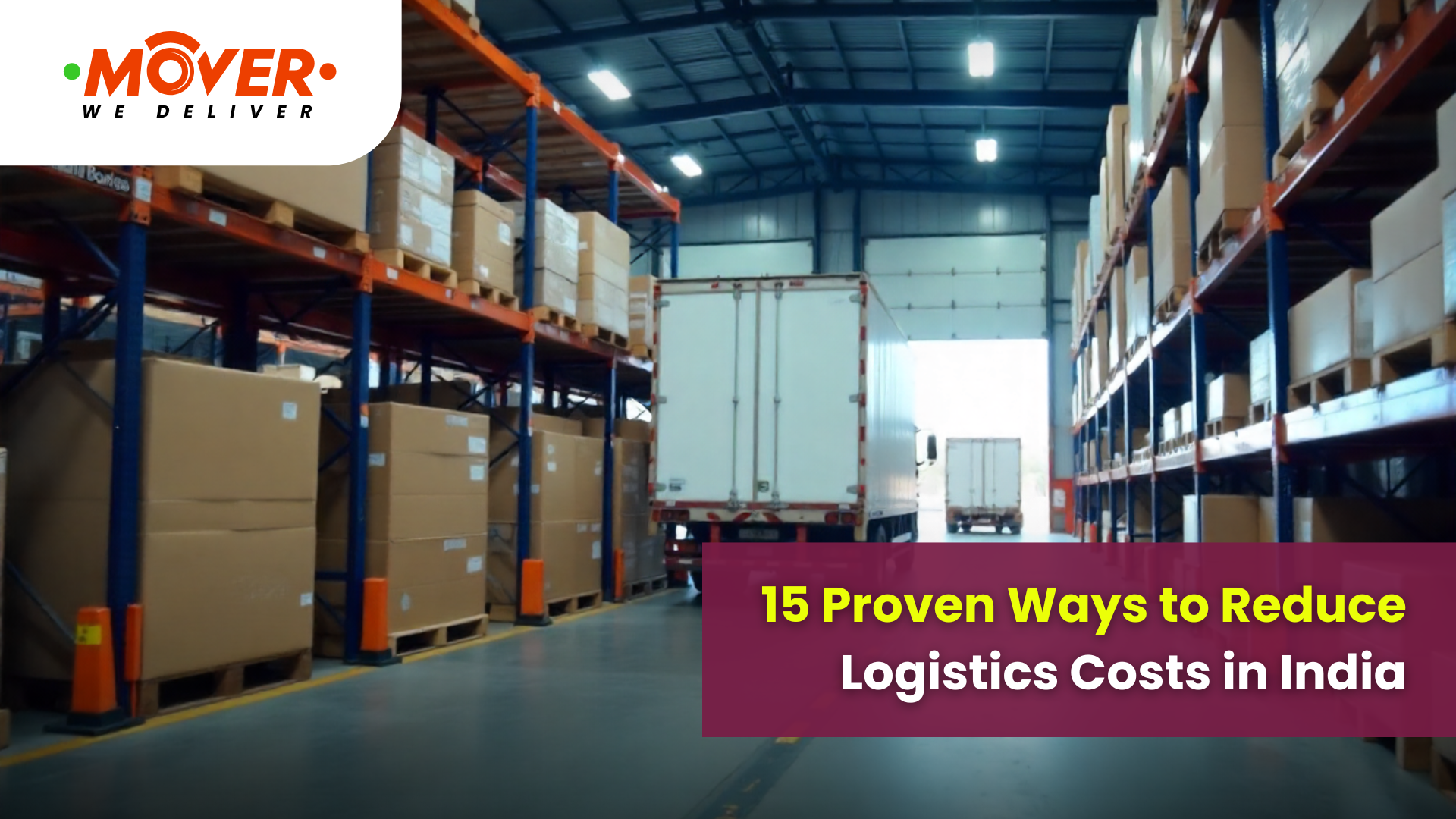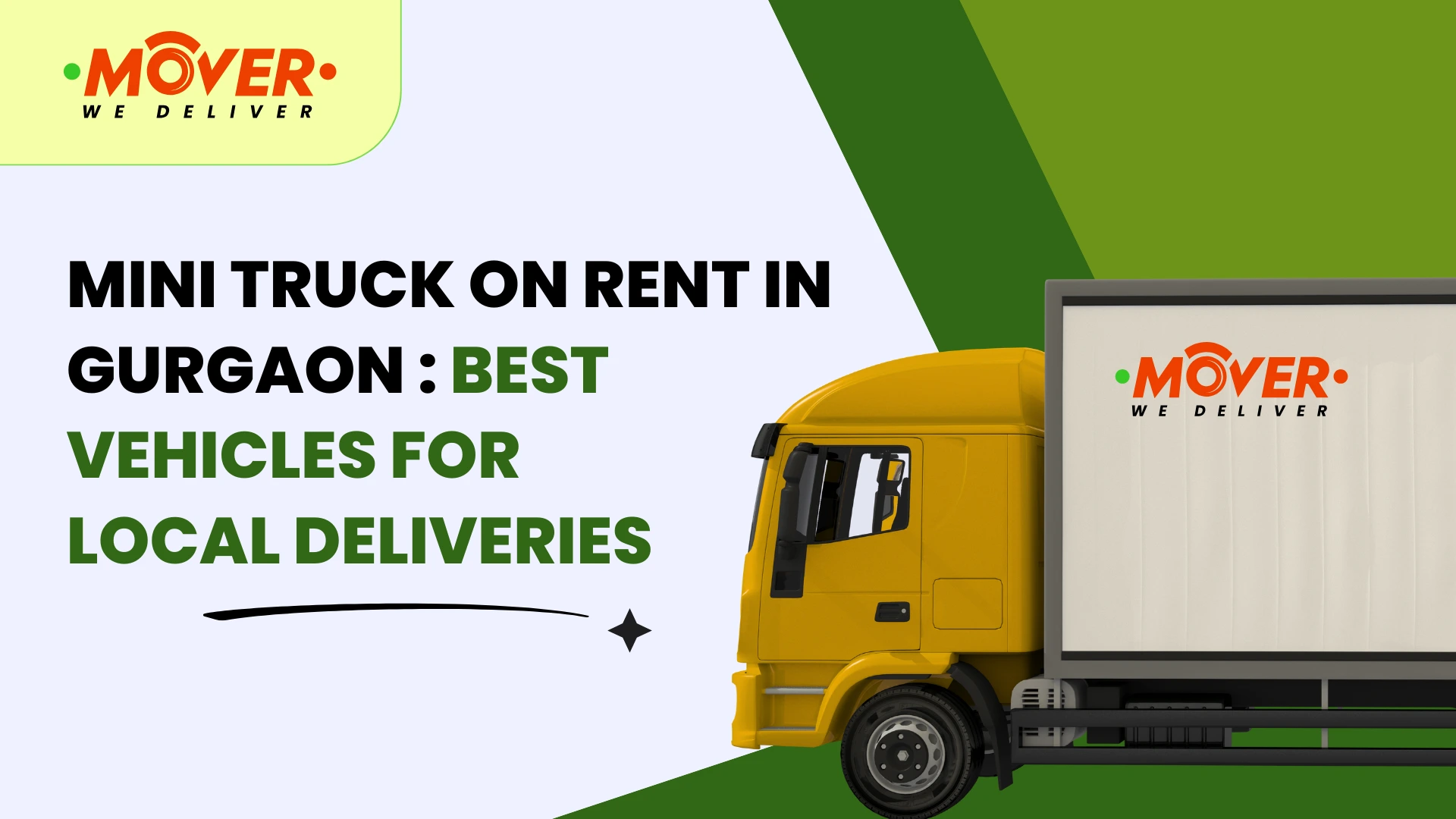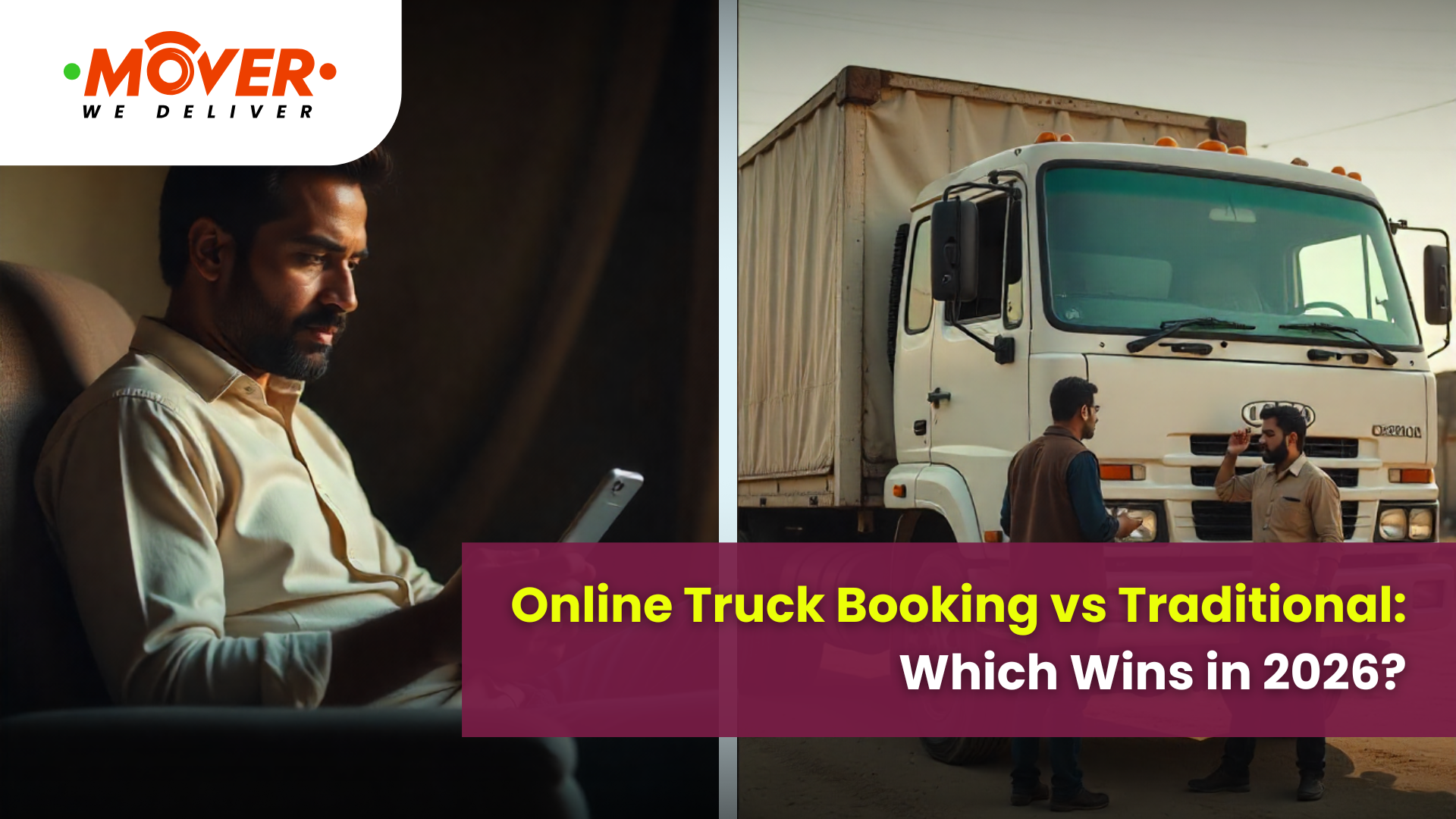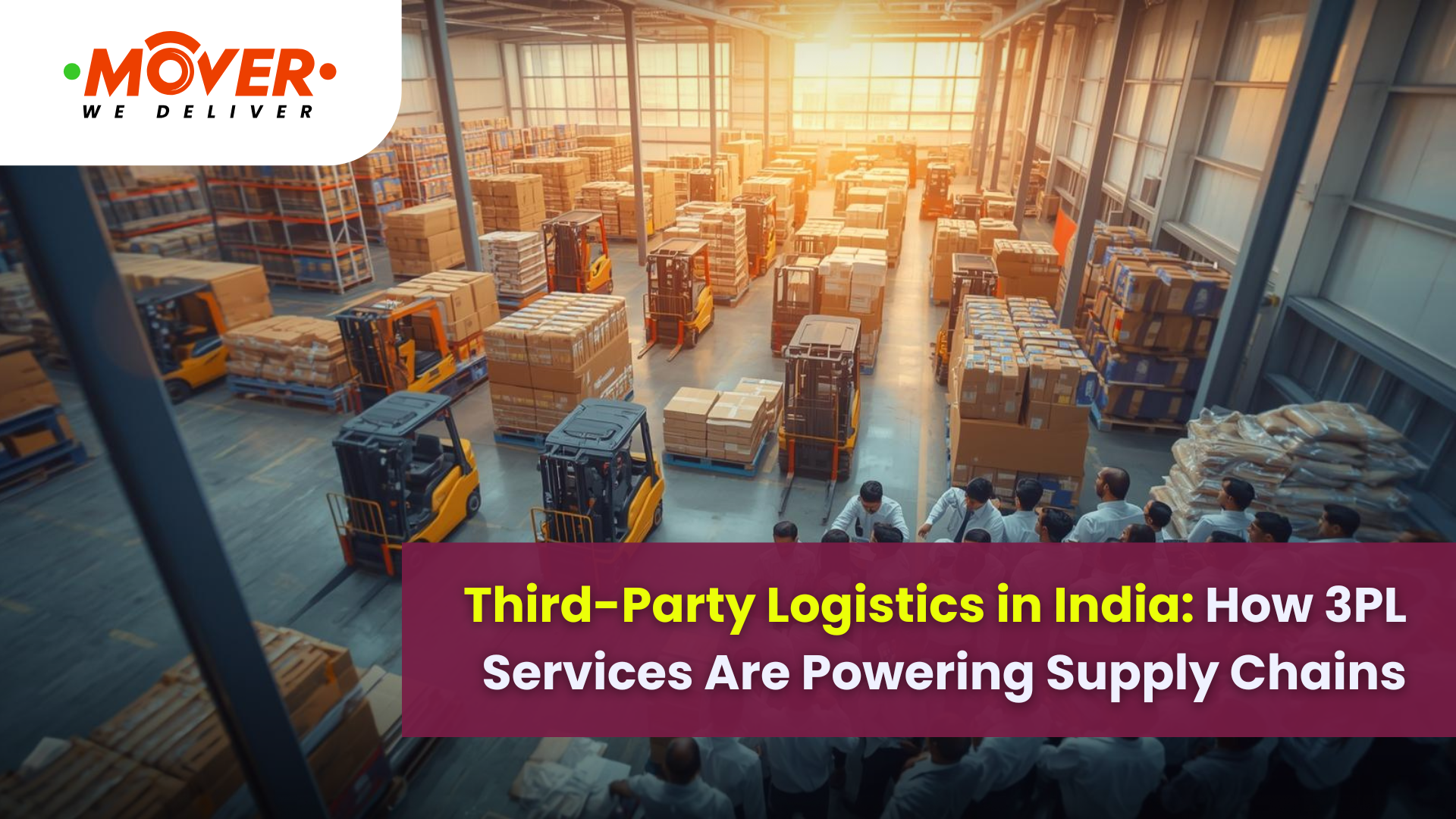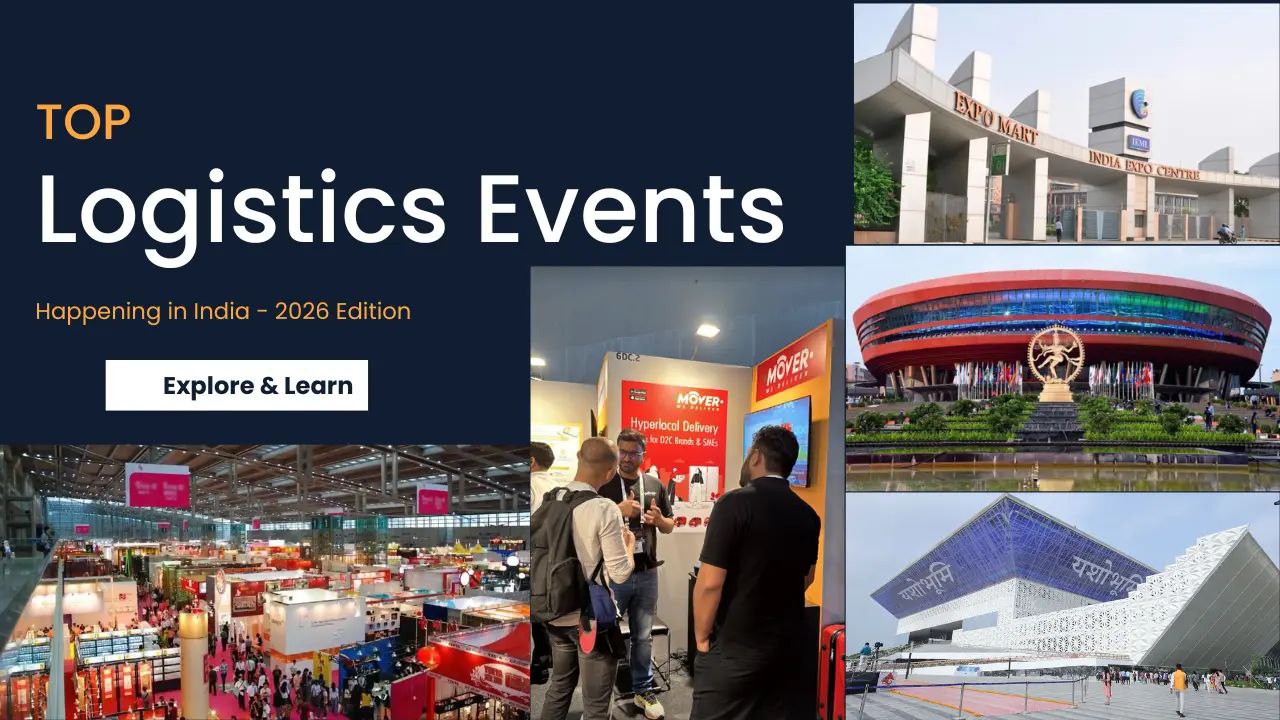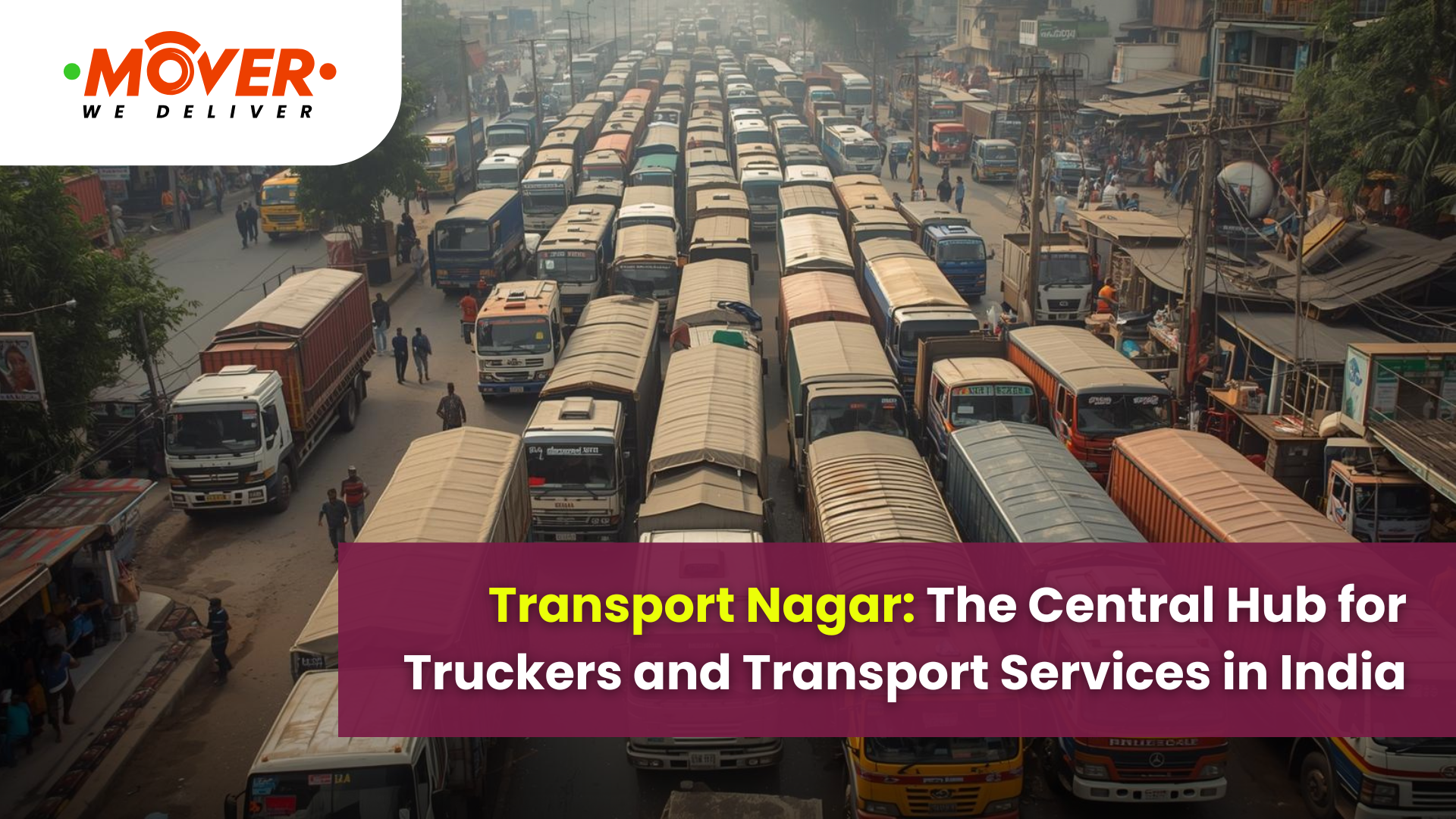If you’re looking to reduce logistics costs, you’re not alone. Logistics often takes a big share of business expenses, directly affecting profits, pricing, and customer satisfaction. According to the latest 2025 assessment by the National Council of Applied Economic Research (NCAER), India’s logistics costs account for 7.97% of GDP and 9.09% of non-services output in 2023–24. This makes cost reduction in logistics management a key priority for businesses today.
With smarter planning and digital innovation, it’s now easier to reduce transportation logistics costs while improving speed and transparency. From fuel-efficient routing to real-time tracking and warehouse automation, technology plays a vital role in cost optimization. Platforms like MOVER, an app-based logistics solution, are helping businesses streamline truck booking, deliveries, and operations efficiently.
In this guide, we’ll explore practical, data-driven strategies to lower logistics expenses, enhance efficiency, and make your supply chain more cost-effective in 2025.
What are Logistics Costs and Why Do They Matter?
In simple terms, logistics costs mean all the expenses related to moving goods from one place to another, from procurement and storage to final delivery. These include freight charges, fuel, warehousing, packaging, handling, and labor.
It’s important to note that transport costs are just one part of the total. The difference between logistics costs vs transport costs lies in scope; logistics covers the full supply chain, while transport focuses only on movement.
When logistics costs rise, profit margins shrink, and delivery timelines suffer. By understanding the logistics cost meaning and its components, businesses can start identifying where savings are possible and plan smarter operations to stay ahead.
Key Insights from NCAER 2025 Report
-
Logistics cost: 7.97% of GDP (INR 24.01 lakh crore)
-
Fuel: 42% of total road transport cost
-
Average warehousing cost: 30/SQ FT Per month (58.5 for cold storage)
-
Multi-modal transport becomes cheaper beyond 600 km
-
Waterways offer the lowest cost per tonne per km
Major Factors Affecting Logistics Costs in India
Several factors contribute to rising logistics costs in India, but many are manageable with better planning and technology. By addressing these issues early, businesses can cut delivery costs and improve operational efficiency without overhauling their entire logistics network.
-
Fuel Prices: Fluctuating fuel rates directly impact transport costs and delivery charges.
-
Inefficient Routes: Poor routing and idle running increase mileage and time on the road.
-
Manual Processes: Traditional systems lead to booking errors, delays, and higher coordination costs.
-
Warehouse Mismanagement: Overstocking, poor inventory visibility, or delayed loading all add to total logistics expenses.
-
Unplanned Deliveries: Lack of forecasting often results in urgent, high-cost shipments.
The NCAER study shows that fuel contributes 42.1% of total road transport costs, making route optimization and efficient vehicle management two of the most effective ways to control expenses.
What are the Different Types of Logistics Costs?
Understanding the major types of logistics costs helps businesses identify where they can reduce logistics costs and improve efficiency. Here are the most common categories:
1. Transportation Costs
These include fuel, tolls, vehicle maintenance, freight charges, and driver wages. Since transportation takes up the largest share of logistics costs, optimizing routes, reducing idle time, and using digital truck booking apps like MOVER can significantly lower overall expenses.
2. Warehousing Costs
Expenses for renting or maintaining storage space, paying utility bills, and managing warehouse staff fall under warehousing costs. Automation, better layout planning, and efficient inventory systems help reduce logistics costs while improving space utilization and order accuracy.
3. Inventory Carrying Costs
These are the costs of storing unsold goods — including capital blockage, depreciation, insurance, and risk of spoilage or obsolescence. Businesses can reduce logistics costs by maintaining optimal inventory levels using demand forecasting and just-in-time (JIT) practices.
4. Packaging Costs
This cost covers materials, labour, and technology used to pack and protect goods during transit. Choosing lightweight, eco-friendly, and cost-effective packaging helps reduce transport costs and supports sustainable logistics cost optimization.
5. Order Fulfillment Costs
This includes all expenses involved in picking, packing, labelling, and dispatching goods to customers. Automating order processes and integrating with digital logistics tools streamlines workflows, cuts manual errors, and reduces logistics costs for faster deliveries.
6. Customs and Duty Costs
For imports and exports, logistics costs include customs clearance fees, duties, and taxes. Partnering with experienced 3PL providers or digital freight platforms ensures compliance, reduces delays, and helps businesses manage international transport costs efficiently.
7. Return or Reverse Logistics Costs
These costs arise from handling product returns, repairs, recycling, or disposal. A well-managed reverse logistics system, supported by technology and route optimization, can reduce logistics costs and recover value from returned or damaged goods.
Smart Ways to Reduce Logistics Costs in India
The NCAER study found that small firms (turnover ≤ ₹5 crore) spend up to 16.9% of their output on logistics, while large enterprises (> ₹250 crore turnover) spend around 7.6%, highlighting the economies of scale that digital logistics solutions like MOVER can help bridge.
1. Optimize Route Planning: Smart route optimization reduces extra mileage, saving fuel and time. Using GPS-based tools and AI route planners helps businesses reduce transportation logistics costs and improve on-time delivery. Companies can also avoid toll congestion and idle truck runs.
2. Leverage Digital Freight Platforms: Digital freight apps like MOVER simplify truck sourcing and pricing. They eliminate 3PL providers, offer transparent freight charges, and allow instant bookings, helping you reduce logistics costs effectively.
3. Consolidate Shipments: Combining smaller loads into one larger shipment minimizes trips and lowers transport costs. This strategy is vital for e-commerce and FMCG firms handling frequent dispatches.
4. Implement Warehouse Automation: Automated inventory systems and robotic handling increase accuracy and speed. As per NCAER data, the average warehousing cost in India is ₹30 per sq. ft per month, rising to ₹58.5 for cold storage. Automation and better design layouts can help optimize this space and lower long-term costs. They help cut delivery costs by reducing labor and minimizing product damage or stock mismatches.
5. Use Data Analytics for Forecasting: Accurate demand forecasting through data analytics avoids over-stocking and emergency shipping. Better inventory flow directly supports logistics cost optimization.
6. Switch to Multi-Modal Transport: Combining road, rail, and air networks reduces dependence on one mode. It helps lower transportation costs and improves reach, especially for long-distance supply chains. According to the 2025 NCAER logistics report, road transport costs ₹3.78 per tonne per km, while rail costs ₹1.96 and inland waterways about ₹2.30. This shows how shifting part of freight movement to rail or waterways can significantly cut expenses for long-distance logistics.”
7. Regular Vehicle Maintenance: Timely truck maintenance saves fuel, reduces breakdowns, and keeps fleets road-ready. Preventive servicing cuts avoidable repair expenses and ensures smooth deliveries. The NCAER report also noted that maintenance and repair make up about 7% of total logistics costs. Preventive servicing and driver training can bring this down while improving delivery reliability.
8. Optimize Fuel Efficiency: Using route analytics, load balancing, and driver training can help save fuel by up to 10–15%. This directly reduces transport charges for every trip.
9. Choose the Right Packaging: Lightweight yet durable packaging materials reduce shipment weight and fuel use. It’s a small but powerful way to save on logistics expenses sustainably.
10. Implement Reverse Logistics: Efficient return handling minimizes additional trips and storage. Automating reverse logistics reduces manual errors and overall logistics costs.
11. Negotiate Long-Term Vendor Contracts: Building consistent relationships with carriers ensures stable rates and reliable service. Long-term contracts help reduce transport costs even during fuel price fluctuations.
12. Adopt Just-in-Time (JIT) Inventory: JIT minimizes storage space and holding expenses by syncing supply with real demand. It’s an effective, cost-effective delivery solution for manufacturing and retail.
13. Improve Last-Mile Delivery: Optimizing local delivery zones using micro-warehouses or dark stores helps cut delivery costs and enhance customer satisfaction.
14. Train Drivers & Staff: Educating drivers on safe driving, load management, and fuel conservation enhances productivity. Skilled teams ensure fewer delays and breakdowns.
15. Integrate Real-Time Visibility Tools: IoT and GPS sensors provide end-to-end visibility across supply chains. This transparency supports better decision-making and helps consistently reduce logistics costs.
Reduce Transport Costs with Technology
Automation and digital tools have completely changed how logistics works. With real-time visibility, automated dispatching, and digital freight matching, companies can now reduce transportation logistics costs while improving speed and reliability. These innovations eliminate manual coordination and reduce idle truck time.
Platforms like MOVER provide cost-effective delivery solutions with transparent pricing, instant truck booking, and smart tracking. For businesses of any size, this shift toward tech-enabled logistics means faster operations, fewer errors, and lower overall expenses — all key to staying competitive in India’s logistics sector.
The Future of Cost Reduction in Logistics
The future of logistics cost optimization lies in sustainability and smart technology. Companies are already investing in AI-led route optimization, electric trucks, and green warehousing to cut emissions and fuel expenses. Real-time data will soon drive every delivery decision, helping reduce logistics costs and improve reliability.
India’s National Logistics Policy (NLP) 2022 and the PM Gati Shakti National Master Plan are already driving infrastructure integration, aiming to cut logistics costs to global benchmarks by 2030 and position India among the top 25 countries in the Logistics Performance Index.
Government initiatives like the National Logistics Policy (NLP) and PM Gati Shakti are accelerating this change by integrating digital infrastructure across India. The result? A more transparent, connected, and efficient logistics ecosystem for businesses of all sizes.
Final Verdict
Reducing logistics costs is no longer about cutting corners; it’s about working smarter. From automation and route optimization to warehouse efficiency, every step can help reduce logistics costs while improving speed and accuracy. Businesses that embrace technology, such as digital freight matching and real-time tracking, achieve faster deliveries and better visibility. From large logistics hubs like Transport Nagar to modern online platforms, the goal remains the same: to reduce logistics costs and ensure smooth, fast deliveries.
With platforms like MOVER, companies gain access to affordable truck booking, transparent freight charges, and efficient routing, all crucial for modern logistics cost optimization. As India’s logistics ecosystem grows under NLP and PM Gati Shakti, adopting tech-driven, cost-effective delivery solutions is the smartest way forward for sustainable growth. The report aligns with the government’s target to reduce logistics costs to 7–8% of GDP by 2030, matching global standards. With AI-led route optimization and multimodal connectivity, India’s logistics sector is expected to save billions annually.
FAQs on How to Reduce Logistics Costs
1. What are the logistics costs?
Logistics costs include all expenses related to moving goods — such as transport, storage, packaging, and handling across the supply chain.
2. What’s the difference between logistics costs and transport costs?
Logistics costs cover the entire supply chain process, while transport costs refer specifically to the movement of goods from one location to another.
3. How can businesses reduce logistics costs effectively?
Businesses can reduce logistics costs through route optimization, automation, digital tracking, and better warehouse management to save time and money.
4. What role does technology play in logistics cost optimization?
Technology enables real-time tracking, predictive analytics, and automation, which enhance visibility and reduce human errors — leading to lower overall logistics expenses.
5. Are online truck booking apps cheaper than traditional methods?
Yes, app-based truck booking platforms are more cost-effective, offering transparent pricing, no middlemen, and optimized routes that lower fuel and transport costs.
6. How do 3PL providers help save logistics expenses?
3PL providers offer expertise, scale, and technology that streamline freight operations, reduce overheads, and provide cost-effective delivery solutions for businesses.
7. What’s the best way to cut delivery costs for SMEs?
SMEs can use digital freight platforms, optimize shipment loads, and plan deliveries in advance to cut delivery costs and improve efficiency.
8. How does MOVER help reduce transportation costs?
MOVER simplifies logistics with instant truck booking, real-time tracking, and fair pricing, helping businesses reduce transportation logistics costs efficiently.
